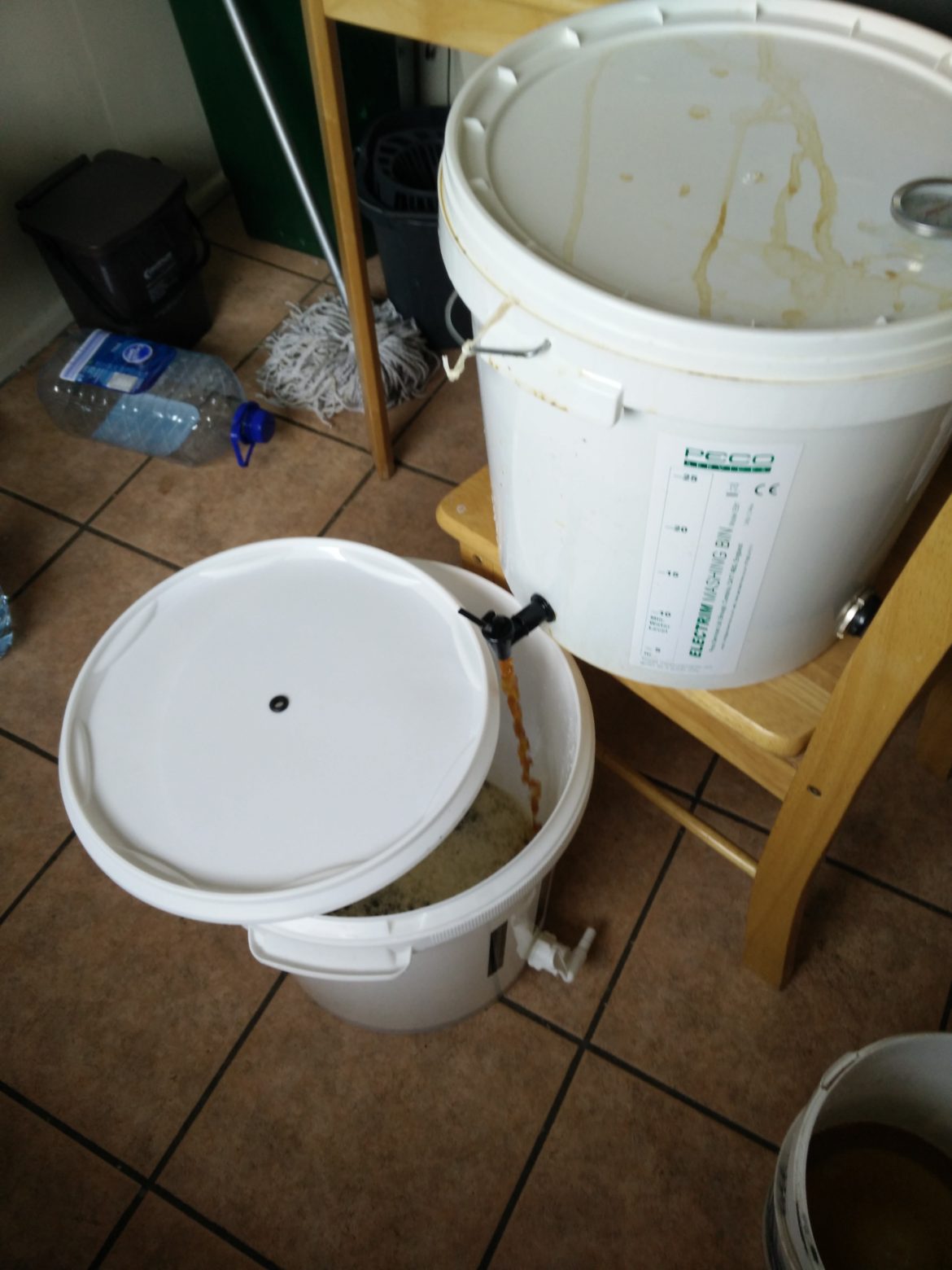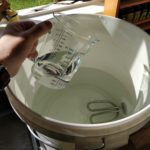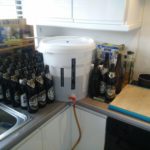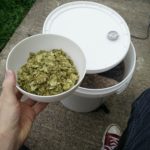Brewing beer is a hobby of mine. I haven’t done very many beers so far, but I find it very satisfying and rewarding. I’ve done a few kit brews with dry malt extract and one extract brew so far. I haven’t had any input into the ingredients I brew with before now – time for a change!
I picked a recipe from Brewing Classic Styles, by Jamil Zainasheff & John J. Palmer, for an Irish Red Ale (It’s called Ruabeoir in their book, which smacks of putting “red beer” into Google Translate, but I digress…).
Having never followed a beer recipe before, I struggled a bit parsing the ingredient list. The °L notation in the recipe after some of the grains was particularly confusing. A quick search of the index informed me that this is “degrees Lovibond”, a scale for measuring the colour of the beer. In the EU, EBC (European Brewing Convention) is used instead, which is 1.97 times the °L value.
I did all of my shopping on The Homebrew Company‘s website – they have a big selection and I’ve ordered from them before when doing my extract brew.
The grain bill called for an English pale malt extract, I went with 3kg of Munton’s Liquid Maris Otter extract, which seems to fit the bill fairly well. The grain bill has 3.67kg, but what’s 670g between friends…?
The steeping grains are when I ran into problems. Initially I was stumped because I couldn’t find any grains matching the 40 EBC and 120 EBC Crystal caramel malts. Then I remembered that only five minutes previous to this, I had looked up how to convert to EBC but hadn’t actually done the conversion! The human mind is a marvellous thing. So what I was actually looking for was 78.8 EBC and 236.6 EBC. I didn’t actually manage to hit my target exactly, but got 82 EBC and 240 EBC, which is pretty close. Where I had my biggest problem in shopping was in finding the roasted barley for steeping. The recipe calls for lightly roasted barley, which clocks in at 591 EBC. The lowest I could find was 800 EBC! Now, since it’s just a steeping grain, my thinking is that it’s not imperative to the actual consistency of the beer in terms of sugar available to the yeasts and whatnot, but its importance is in flavour and colouring. I went with the 800 EBC roast and intend to just use slightly less than is called for in the recipe. This might not be ideal, but at least I’m putting my own stamp on the recipe! I anticipate this will make the beer a bit darker than is usual for a red ale, but hopefully dialling back the quantity used means the flavour won’t be affected too adversely.
Other than that, I was able to get the rest of the required ingredients – Kent Goldings hops (the variety I found was East Kent Goldings, but the Alpha value – the bitterness – is 5.5% compared to the target 5%, so not too far off) and White Labs WLP004 Irish Ale liquid yeast.
The quantities the grains and hops were sold in mean that I have ordered excess. I have enough hops and steeping grains for two batches, so I ordered extra malt extract and yeast – if this turns out well I can do a second batch, but I have to store the opened grains and hops well so they survive until then.
I hope to have the ingredients delivered soon and will have a brew ready for Christmas. Stay tuned for more updates!




